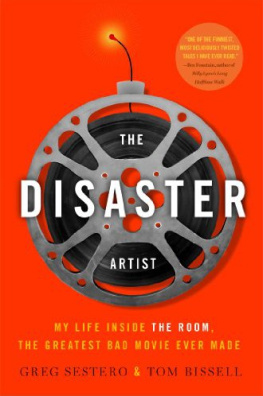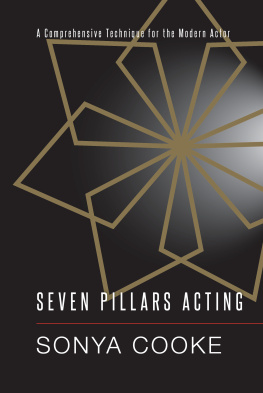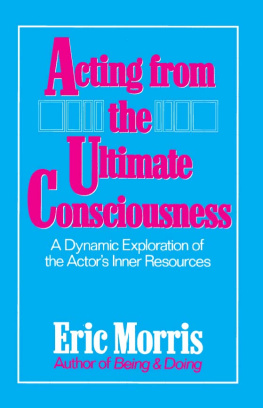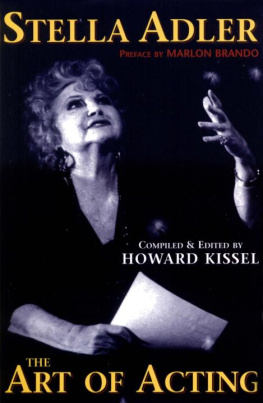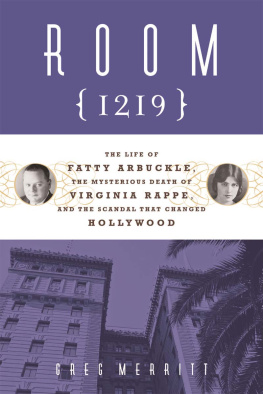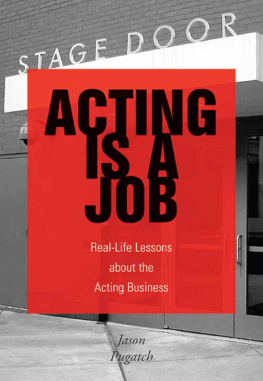Thank you for downloading this Simon & Schuster eBook.
Join our mailing list and get updates on new releases, deals, bonus content and other great books from Simon & Schuster.
C LICK H ERE T O S IGN U P
or visit us online to sign up at
eBookNews.SimonandSchuster.com
Contents
To my family, with my love and gratitude
Joe Gillis: | Maybe its a little long, and maybe theres some repetitions... but youre not a professional writer. |
Norma Desmond: | I wrote that with my heart. |
Joe Gillis: | Sure you did. Thats what makes it great. |
Sunset Boulevard (1950)
I always thought it would be better to be a fake somebody than a real nobody.
Tom Ripley, The Talented Mr. Ripley (1999)
This play can be played without any age restriction. It will work if the chemistry between all the characters makes sense. Human behavior and betrayal applies to all of us. It exists within ourselves. You love somebody. Do you? What is love? You think you have everything, but you dont have anything. You have to have hope and spirit. Be an optimist. But can you handle all your human behavior or others behavior? You dont want to be good, but great.
Directors Note, The Room (2001), by Tommy P. Wiseau
The Players
Tommy Wiseau | Johnny / writer, director, producer |
Don [ sic ] | the other Mark |
Brianna Tate | the other Michelle |
Philip Haldiman | Denny |
Dan Janjigian | Chris-R |
Scott Holmes | Mike |
Juliette Danielle | Lisa |
Carolyn Minnott | Claudette |
Robyn Paris | Michelle |
Kyle Vogt | Peter |
Greg Ellery | Steven |
Bill Meurer | Birns & Sawyer owner |
Peter Anway | Birns & Sawyer rep |
Raphael Smadja | director of photography no. 1 |
Sandy Schklair | script supervisor |
Safowa Bright | costume designer |
Amy Von Brock | makeup artist |
Zsolt Magyar | sound mixer |
Merce | art department |
Graham Futerfas | director of photography no. 2 |
Todd Barron | director of photography no. 3 |
Byron | stagehand / director of yelling |
Joe Pacella | camera assistant |
Authors Note
Imagine a movie so incomprehensible that you find yourself compelled to watch it over and over again. You become desperate to learn how (if) on earth it was conceived: Who made it, and for what purpose?
This book is about what might be the worlds most improbable Hollywood success story. At its center is an enigmatic filmmaker who claims, among many other things, to be a vampire. This man speaks with a thick European accent, the derivation of which he wont identify. He also refuses to reveal his age or the origins of his seemingly vast fortune. His name is Tommy Wiseau; and the film he wrote, directed, produced, starred in, and poured $6 million into is a disastrous specimen of cinematic hubris called The Room.
The Room isdespite its ostensibly simple plotperhaps the most casually surreal film ever made. To put it simply, The Room doesnt work in any way films have evolved to work over the last century of filmmaking. Its filled with red herrings, shots of locations that are never visited, and entire conversations comprised of non sequiturs. It is, essentially, one gigantic plot hole. For many, experiencing The Room is both wildly exhilarating and supremely dislocating. The film engenders an obsessive fascination, instantly luring you into its odd, convoluted world. Tommy Wiseau intended The Room to be a serious American drama, a cautionary tale about love and friendship, but it became something else entirelya perfectly literal comedy of errors.

A typical reaction to the film, at its Copenhagen premiere.
Yet since its 2003 release, The Room has spread across the United States, and now the world, with viral unstoppability. Many believe that The Room s unfathomable incompetence elevates it to something like Bizarro-world brilliance. Its revered for its inadequacy and its peerless ability to induce uncontrollable laughter from beginning to end. It may be the most wonderfully terrible one hour and thirty-nine minutes ever committed to celluloid.
And I was in it.
In 1998, as a nineteen-year-old aspiring actor, I enrolled in an acting class in San Francisco. It was there that I met Tommy Wiseau, an encounter that had an unforeseeable impact on the direction of my life. Tommy and I were opposites in every conceivable way, though we shared a common dream: a career in entertainment. This chance meeting inspired a journey neither I nor anyone else could have imagined.
This book is a personal account of that journeythe one that led to the phenomenon that is The Room. It is, I hope, a tale of heart, sadness, and blind artistic courage. The story it tells is as much about the power of believing in oneself as it is about the perils that can arise in conquering self-imposed limitations.
The conversations and events depicted herein are true and have been rendered as I recall them. The material in this book not derived from my observations and experience is the documented result of on-the-record interviews with Tommy and other persons concerned. I have also used as reference The Room s original script, photographs, and hours of behind-the-scenes production footage. The footage in particular was used to accurately describe scenes related to the filming process. Minimal liberties have been taken to streamline the narrative. In combining and condensing some conversations or events, I have done so with the hope of maintaining their integrity while also accurately capturing their mood and spirit.
Upon its debut, The Room was a spectacular bomb, pulling in all of $1,800 during its initial two-week Los Angeles run. It wasnt until the last weekend of the films short release that the seeds of its eventual cultural salvation were planted. While passing a movie theater, two young film students named Michael Rousselet and Scott Gairdner noticed a sign on the ticket booth that read: NO REFUNDS . Below the sign was this blurb from a review: Watching this film is like getting stabbed in the head. They were sold.

The crazy cult of The Room . From left: Michael Rousselet, comedian David Cross, and Scott Gairdner.
The Room mesmerized Rousselet and Gairdner. They rallied others to experience the film and soon enough a cult was born. These young men and women created many of The Room s now famous audience participation rituals, and for several years served as the vanguard of an unofficial underground fan club. They simply wouldnt let the film die, going so far as to camp outside one theater to demand its continuance. The combination of their enthusiasm and Tommys hapless guerrilla marketing made the film an L.A. in-joke and an entertainment industry curiosity. Before long, the cream of Hollywoods comedy community developed a particular affinity for Tommys film, hosting private Room parties and parodying it in their work. Slowly, the films cult status gained momentum, and by 2009, The Room had entered the mainstream. It was featured in Entertainment Weekly, Time, and Harpers and covered on CNN, FOX News, and ABC World News; it also began airing annually on national television. Following the media blitz, The Room emerged as a top-selling independent film, and to this day it screens to sold-out crowds worldwide.

